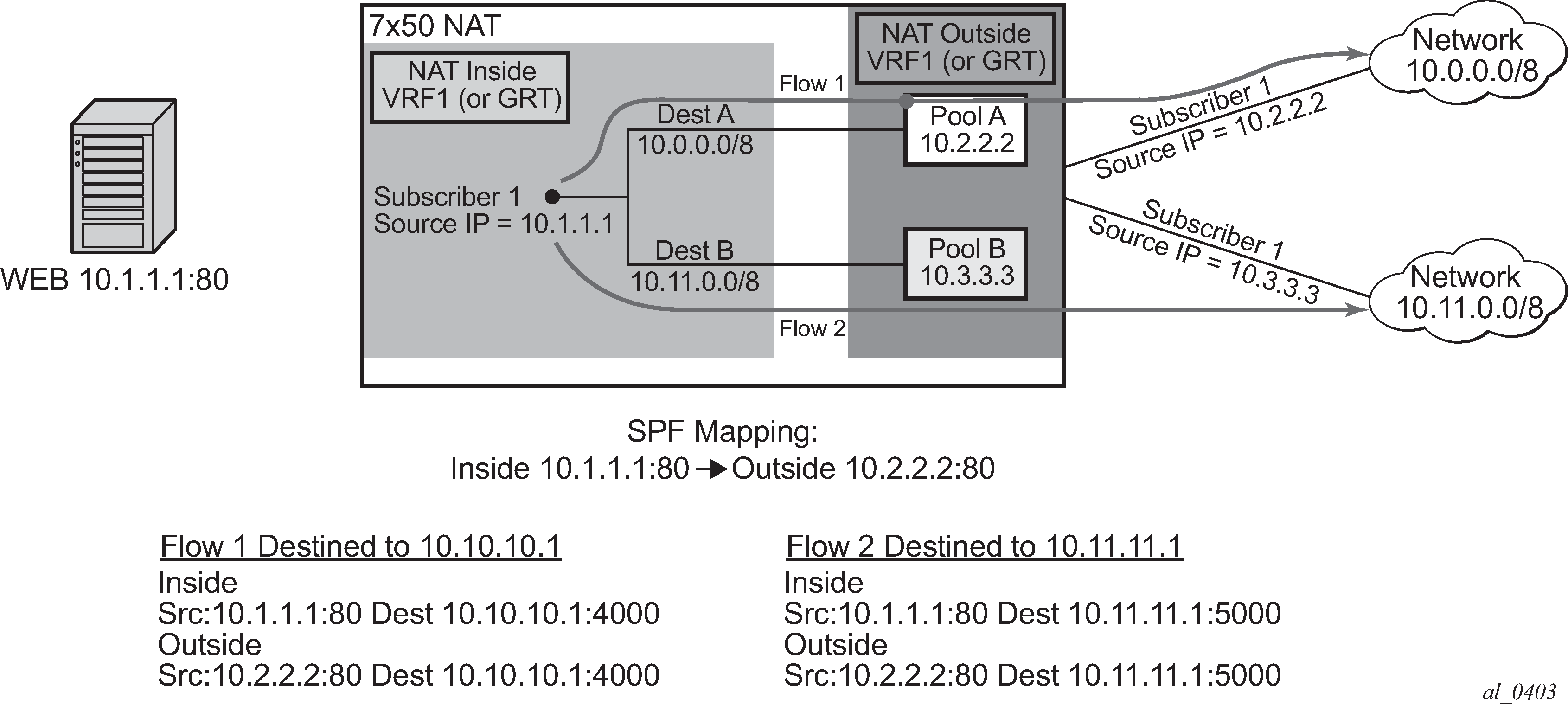Figure: SPF with multiple NAT policies and Figure: Bypassing NAT policy rule describe specific scenarios that are more theoretical and are less likely to occur in reality. However, they are described here for the purpose of completeness.
Figure: SPF with multiple NAT policies represents the case where traffic from the WEB server 10.1.1.1 is initiated toward the destined network 10.11.0.0/8. Such traffic ends up translated in the Pool B and forwarded to the 10.11.0.0/8 network even though the static port forward has been created in Pool A. In this case, the NAT policy rule (dest 10.11.0.0/8 pool B) determines the pool selection in the upstream direction (even though the SPF for the WEB server already exists in the Pool A).

The next example in Figure: Bypassing NAT policy rule shows a case where the Flow 1 is initiated from the outside. Because the partial mapping matching this flow already exists (created by SPF) and there is no more specific match (FQF) present, the downstream traffic is mapped according to the SPF (through Pool A to the Web server). At the same time, a more specific entry (FQF) is created (initiated by the very same outside traffic). This FQF now determines the forwarding path for all traffic originating from the inside that is matching this flow. This means that the Flow 2 (reverse of the Flow 1) is not mapped to an IP address from the pool B (as the policy dictates) but instead to the Pool A which has a more specific match.
A more specific match would be in this case fully qualified flows (FQF) that contains information about the foreign host: <host, inside IP/port, outside IP/port, foreign IP address/port, protocol>.
